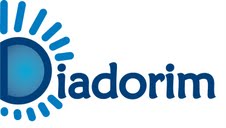ESTUDO ELETROMIOGRÁFICO DE MÚSCULOS DO SISTEMA ESTOMATOGNÁTICO DURANTE A MASTIGAÇÃO DE DIFERENTES MATERIAIS
DOI:
https://doi.org/10.13037/rbcs.vol1n1.491Keywords:
eletromiografia, músculos da mastigação, goma de mascar.Abstract
O objetivo deste estudo foi comparar o comportamento de alguns dos principais músculos da mastigação (M. temporal, porção anterior, M. masséter e MM. suprahióideos), com a utilização de duas marcas comerciais de goma de mascar A e B e dois materiais insípidos, Rolinho de Algodão e Parafilm.M.®, através de análise dos sinais eletromiográficos. Participaram deste estudo dez (10) voluntários, do sexo feminino, adulto/jovem, com idade variando de 18 a 27 anos, com normo oclusão, e sem história de disfunção craniomandibular. A atividade mastigatória foi realizada com o voluntário sentado com o plano de Frankfurt posicionado paralelo ao solo. Para tanto, foram realizados exames eletromiográficos dos mm. temporais, porção anterior e masséteres, bilaterais e supra-hióideos, bilateralmente; utilizando-se mini-eletrodos passivos de superfície. Os voluntários foram orientados a mastigar bilateral e simultaneamente cada um dos produtos, em seqüência aleatória. Para o estudo da atividade mastigatória os traçados eletromiográficos foram tratados através de retificação, envoltório linear e normalização, de forma que o coeficiente de variação resultante do processamento fosse analisado comparativamente. Todos os dados foram tratados pela Análise de Variância Univariada e Multivariada. Os resultados do estudo demostraram que não existiu diferença estatística fortemente significativa entre o material Rolinho de Algodão e Parafilm. Estes produtos revelam que no contexto geral ambos são indicados para execução do exame eletromiográfico, pois apresentam menor variação com relação aos demais produtos.Downloads
References
1. BASMAJIAN, J.V.; DE LUCA, C.J. Muscle alive: their function revealed by eletromyography. 5. ed. Baltimore: Williams e Wilkins, v. 24, p. 501-61, 1985.
2. BASMAJIAN, J.V. Muscles alive: their function revealed by eletromyography. 1. ed. Baltimore: Williams e Wilkins, 1962.
3. INMAN, V.T.; SAUNDERS, J.B.C.; ABBOTT, L.C. Observations on the function of the shoulder joint. J. Bone Jt. Surg. 26: 1-30, 1944.
4. KARKARAZIS, H.C.; KOSSIONI, A.E. Re-examination of the surface EMG activity of the masseter muscle in young adults during chewing of two test foods. Journal of Oral Rehabilitation, 24 : 216-223, 1997.
5. SODERBERG, G.L.; COOK, T.M. Eletromyography in Biomechanics. Physical Therapy, 64 : 1813-20, 1984.
6. BURDETTE, B.H.; GALLE, E.N. Reliability of surface eletromyograph of masseteric and anterior temporal areas. Archs Oral Biol., 35(9): 747-751, 1990.
7. FURUYA, R.; ZULQARNAI, B.J.; HEDEGARD, B. The silent period in the masseter and anterior temporalis muscle in young adults. Subjects unaware of mandibular dysfunction symptoms. Journal of Oral Rehabil., 15(1): 77-90, 1988.
8. LYNONS, M.F.,R.; ROUSE, M.E.; BAXENDALE, R.H. Fatigue and EMG changes in the masseter and temporalis muscle during sustained contractions. Journal of Oral Rehabil., 20: 321-331, 1993.
9. TÜRKER, K.S. Electromyographyc: some methodological problems and issues. Phys. Ther., 73(10): 698-710, 1993.
10. CHRISTENSEN, L.V.; TRAN, K.T.; MOHAMED, S.E. Gum chewing and jaw muscle fatigue and pains. Journal of Oral Rehabil., 23: 424-437, 1996.
11. WINTER, D.A. The biomechanics and motor control of human movement. 2. ed. John Wiley & Sons, 1990.
12. STOHLER, C.S. A comparative electromyographic and Kinesiographic study of deliberate and habitual mastication in man. Archs. Oral Biol. 31(10): 669-78, 1986.
13. BLANKSMA, N.G; VAN EIJDEN, T.M.G.J. Electromyographic Heterogeneity in the Humam Temporalis and Masseter Muscles during Static Biting. Open Close Excursion, and Chewi. Journal of Dental Research., 74 (6): 1318-1327, 1995.
Downloads
Published
Issue
Section
License
Copyright (c) 2025 Daniela A. Biasotto Gonzales, Fausto Bérzin

This work is licensed under a Creative Commons Attribution-NonCommercial-NoDerivatives 4.0 International License.
Policy Proposal for Journals offering Free Delayed Access
Authors who publish in this magazine agree to the following terms:
- Authors maintain the copyright and grant the journal the right to the first publication, with the work simultaneously licensed under a Creative Commons Attribution License after publication, allowing the sharing of the work with recognition of the authorship of the work and initial publication in this journal.
- Authors are authorized to assume additional contracts separately, for non-exclusive distribution of the version of the work published in this magazine (eg, publishing in institutional repository or as a book chapter), with the acknowledgment of the authorship and initial publication in this journal.
- Authors are allowed and encouraged to publish and distribute their work online (eg in institutional repositories or on their personal page) at any point before or during the editorial process, as this can generate productive changes, as well as increase impact and citation of the published work (See The Effect of Open Access).








